-
 Bitcoin
Bitcoin $86,989.5773
2.47% -
 Ethereum
Ethereum $1,907.7486
-0.28% -
 Tether USDt
Tether USDt $0.9998
0.00% -
 XRP
XRP $2.1782
1.30% -
 BNB
BNB $605.9725
-1.07% -
 Solana
Solana $130.9318
2.03% -
 USDC
USDC $0.9997
-0.03% -
 Dogecoin
Dogecoin $0.1757
1.47% -
 Cardano
Cardano $0.6948
1.08% -
 TRON
TRON $0.2378
0.79% -
 Toncoin
Toncoin $4.0441
0.19% -
 Chainlink
Chainlink $14.1226
-0.93% -
 UNUS SED LEO
UNUS SED LEO $9.3952
0.65% -
 Stellar
Stellar $0.2737
-1.37% -
 Avalanche
Avalanche $19.7700
-0.01% -
 Sui
Sui $2.4853
0.25% -
 Shiba Inu
Shiba Inu $0.0...01283
-0.56% -
 Hedera
Hedera $0.1728
-0.67% -
 Polkadot
Polkadot $4.2112
-0.14% -
 Litecoin
Litecoin $86.0983
1.27% -
 Bitcoin Cash
Bitcoin Cash $312.1520
-0.42% -
 MANTRA
MANTRA $6.3442
0.01% -
 Bitget Token
Bitget Token $4.6044
-0.33% -
 Dai
Dai $0.9999
0.00% -
 Ethena USDe
Ethena USDe $0.9999
0.00% -
 Hyperliquid
Hyperliquid $14.0809
4.33% -
 Pi
Pi $0.6847
-3.43% -
 Monero
Monero $219.9574
0.86% -
 Uniswap
Uniswap $6.2581
0.04% -
 Pepe
Pepe $0.0...07858
1.61%
What does it mean when KDJ indicator deviates?
The KDJ indicator, used in crypto trading, signals potential trend reversals through bullish and bearish deviations, aiding traders in making informed decisions.
Apr 01, 2025 at 03:08 pm
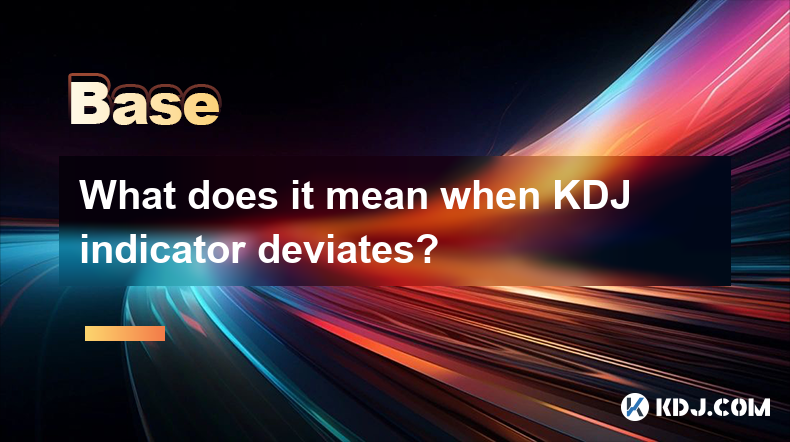
The KDJ indicator, also known as the Stochastic Oscillator, is a popular technical analysis tool used in the cryptocurrency market to predict price movements. When the KDJ indicator deviates, it means that the current price of a cryptocurrency is moving away from its typical range, as indicated by the KDJ lines. This deviation can signal potential trend reversals or continuations, depending on the context. Understanding the meaning behind KDJ deviations is crucial for traders looking to make informed decisions in the volatile crypto market.
What is the KDJ Indicator?
The KDJ indicator is derived from the Stochastic Oscillator and is used to measure the momentum of price movements. It consists of three lines: the K line, the D line, and the J line. The K line represents the current market momentum, the D line is a moving average of the K line, and the J line is a more sensitive indicator that can signal potential overbought or oversold conditions. The KDJ indicator ranges between 0 and 100, with readings above 80 indicating overbought conditions and readings below 20 indicating oversold conditions.
Types of KDJ Deviations
There are two main types of KDJ deviations: bullish and bearish. A bullish deviation occurs when the price of a cryptocurrency makes a new low, but the KDJ indicator fails to confirm this low by making a higher low. This divergence suggests that the downward momentum is weakening, and a potential bullish reversal may be imminent. Conversely, a bearish deviation occurs when the price makes a new high, but the KDJ indicator fails to confirm this high by making a lower high. This divergence indicates that the upward momentum is weakening, and a potential bearish reversal may be on the horizon.
Identifying Bullish KDJ Deviations
To identify a bullish KDJ deviation, traders should follow these steps:
- Monitor the price chart for a new low in the cryptocurrency's price.
- Check the KDJ indicator to see if it fails to make a new low and instead forms a higher low.
- Confirm the bullish deviation by observing a subsequent upward movement in the price, which validates the divergence signal.
A bullish KDJ deviation is considered a strong buy signal, as it suggests that the selling pressure is diminishing and buyers are regaining control of the market.
Identifying Bearish KDJ Deviations
To identify a bearish KDJ deviation, traders should follow these steps:
- Monitor the price chart for a new high in the cryptocurrency's price.
- Check the KDJ indicator to see if it fails to make a new high and instead forms a lower high.
- Confirm the bearish deviation by observing a subsequent downward movement in the price, which validates the divergence signal.
A bearish KDJ deviation is considered a strong sell signal, as it suggests that the buying pressure is weakening and sellers are starting to take control of the market.
Trading Strategies Based on KDJ Deviations
Traders can use KDJ deviations to develop effective trading strategies in the cryptocurrency market. Here are some common strategies:
- Bullish Deviation Strategy: When a bullish KDJ deviation is identified, traders can enter a long position, expecting the price to rise. They can set a stop-loss order below the recent low to manage risk and aim for a target price based on resistance levels or technical indicators.
- Bearish Deviation Strategy: When a bearish KDJ deviation is identified, traders can enter a short position, anticipating a price decline. They can set a stop-loss order above the recent high to limit potential losses and target a price based on support levels or technical indicators.
- Confirmation Strategy: Traders can wait for additional confirmation signals, such as a bullish or bearish candlestick pattern or a breakout from a key support or resistance level, before acting on a KDJ deviation. This approach can help increase the probability of successful trades.
Limitations of KDJ Deviations
While KDJ deviations can be powerful tools for predicting price movements in the cryptocurrency market, they have some limitations that traders should be aware of:
- False Signals: KDJ deviations can sometimes produce false signals, leading to premature entries or exits from trades. Traders should use other technical indicators or fundamental analysis to confirm the validity of a KDJ deviation before making trading decisions.
- Lag: The KDJ indicator is based on historical price data, which means it can lag behind real-time market conditions. Traders should be cautious of relying solely on KDJ deviations and consider incorporating other leading indicators into their analysis.
- Market Noise: In highly volatile markets, KDJ deviations can be influenced by short-term price fluctuations and market noise. Traders should use longer timeframes and consider the overall trend when interpreting KDJ deviations to avoid being misled by temporary price movements.
Combining KDJ Deviations with Other Indicators
To enhance the effectiveness of KDJ deviations, traders can combine them with other technical indicators. Some popular combinations include:
- Moving Averages: Traders can use moving averages to confirm the direction of the trend and validate KDJ deviations. For example, a bullish KDJ deviation accompanied by a bullish crossover of moving averages can strengthen the buy signal.
- Relative Strength Index (RSI): The RSI can be used to confirm overbought or oversold conditions signaled by KDJ deviations. A bullish KDJ deviation combined with an RSI reading below 30 can indicate a strong buying opportunity, while a bearish KDJ deviation combined with an RSI reading above 70 can signal a compelling selling opportunity.
- MACD: The Moving Average Convergence Divergence (MACD) indicator can be used to confirm the momentum behind KDJ deviations. A bullish KDJ deviation accompanied by a bullish MACD crossover can reinforce the buy signal, while a bearish KDJ deviation combined with a bearish MACD crossover can strengthen the sell signal.
Practical Examples of KDJ Deviations in the Crypto Market
To illustrate the application of KDJ deviations in the cryptocurrency market, let's consider two practical examples:
- Bitcoin (BTC) Bullish Deviation: Suppose the price of Bitcoin makes a new low at $30,000, but the KDJ indicator forms a higher low at 25. This bullish deviation suggests that the selling pressure is weakening, and a potential bullish reversal may be imminent. If the price subsequently rises above $30,000, it confirms the bullish deviation, and traders can enter a long position, targeting higher resistance levels.
- Ethereum (ETH) Bearish Deviation: Imagine the price of Ethereum makes a new high at $2,500, but the KDJ indicator forms a lower high at 75. This bearish deviation indicates that the buying pressure is weakening, and a potential bearish reversal may be on the horizon. If the price subsequently falls below $2,500, it validates the bearish deviation, and traders can enter a short position, aiming for lower support levels.
Risk Management and KDJ Deviations
Effective risk management is crucial when trading based on KDJ deviations in the cryptocurrency market. Traders should consider the following risk management strategies:
- Stop-Loss Orders: Always set a stop-loss order to limit potential losses in case the market moves against the KDJ deviation signal. The stop-loss level should be placed at a logical point, such as below a recent low for a bullish deviation or above a recent high for a bearish deviation.
- Position Sizing: Determine the appropriate position size based on the trader's risk tolerance and account balance. Smaller position sizes can help mitigate the impact of potential losses if a KDJ deviation signal fails.
- Profit Targets: Set realistic profit targets based on key support and resistance levels or technical indicators. Traders can use trailing stop-loss orders to lock in profits as the price moves in their favor.
Psychological Aspects of Trading KDJ Deviations
Trading based on KDJ deviations in the cryptocurrency market can be emotionally challenging due to the volatility and uncertainty of the market. Traders should consider the following psychological aspects:
- Patience: KDJ deviations may not always lead to immediate price reversals. Traders need to exercise patience and wait for confirmation signals before acting on a deviation.
- Discipline: Stick to the trading plan and avoid chasing trades based on KDJ deviations. Emotional decisions can lead to poor trading outcomes and increased risk.
- Emotional Control: Manage emotions such as fear and greed, which can cloud judgment when interpreting KDJ deviations. Maintaining a clear and rational mindset is essential for successful trading.
Continuous Learning and Adaptation
The cryptocurrency market is constantly evolving, and traders need to continuously learn and adapt their strategies based on KDJ deviations. Here are some tips for ongoing improvement:
- Backtesting: Regularly backtest KDJ deviation strategies using historical data to assess their performance and make necessary adjustments.
- Stay Informed: Keep up-to-date with market news, trends, and developments that may impact the effectiveness of KDJ deviations. Adapt strategies accordingly to changing market conditions.
- Learn from Experience: Analyze past trades based on KDJ deviations to identify patterns, strengths, and weaknesses. Use this knowledge to refine trading strategies and improve decision-making.
Common Questions Related to KDJ Deviations
Q: What is the KDJ indicator used for in cryptocurrency trading?
A: The KDJ indicator is used to measure the momentum of price movements in the cryptocurrency market. It helps traders identify potential overbought or oversold conditions and predict trend reversals or continuations based on deviations between the price and the indicator.
Q: How can I identify a bullish KDJ deviation?
A: To identify a bullish KDJ deviation, monitor the price chart for a new low in the cryptocurrency's price. Then, check the KDJ indicator to see if it fails to make a new low and instead forms a higher low. Confirm the bullish deviation by observing a subsequent upward movement in the price.
Q: What is the significance of a bearish KDJ deviation?
A: A bearish KDJ deviation occurs when the price of a cryptocurrency makes a new high, but the KDJ indicator fails to confirm this high by making a lower high. This divergence indicates that the upward momentum is weakening, and a potential bearish reversal may be imminent.
Q: Can KDJ deviations be used as standalone trading signals?
A: While KDJ deviations can provide valuable insights into potential price reversals, they should not be used as standalone trading signals. Traders should combine KDJ deviations with other technical indicators and consider market context to increase the probability of successful trades.
Q: How can I manage risk when trading based on KDJ deviations?
A: To manage risk when trading based on KDJ deviations, always set stop-loss orders to limit potential losses, determine appropriate position sizes based on risk tolerance, and set realistic profit targets. Additionally, maintain emotional control and stick to a disciplined trading plan.
Q: Are KDJ deviations effective in all market conditions?
A: KDJ deviations can be effective in various market conditions, but their reliability may vary. In highly volatile markets, KDJ deviations can be influenced by short-term price fluctuations and market noise. Traders should consider using longer timeframes and confirming KDJ deviations with other indicators to increase their effectiveness.
Q: How can I improve my skills in interpreting KDJ deviations?
A: To improve your skills in interpreting KDJ deviations, regularly backtest strategies, stay informed about market developments, and learn from past trades. Continuous learning and adaptation are key to mastering the use of KDJ deviations in cryptocurrency trading.
Disclaimer:info@kdj.com
The information provided is not trading advice. kdj.com does not assume any responsibility for any investments made based on the information provided in this article. Cryptocurrencies are highly volatile and it is highly recommended that you invest with caution after thorough research!
If you believe that the content used on this website infringes your copyright, please contact us immediately (info@kdj.com) and we will delete it promptly.
- The broader crypto market witnessed a rebound today
- 2025-04-02 23:55:12
- 3 Oaks Gaming Enters the UK iGaming Market Through a New Partnership with BVGroup
- 2025-04-02 23:55:12
- XRP Price Has Continued To Stay In The Red, Consolidating In The $2.10 Range Over The Past Few Days
- 2025-04-02 23:50:12
- Is Kaspa (KAS) Still Worth Holding in 2025 Despite Prolonged Struggles?
- 2025-04-02 23:50:12
- Circle Labs Inc. (USDC) IPO Filing Sheds Light on Its Relationship with Coinbase
- 2025-04-02 23:45:12
- Seamless Migrates Its Entire Infrastructure to Morpho Labs
- 2025-04-02 23:45:12
Related knowledge
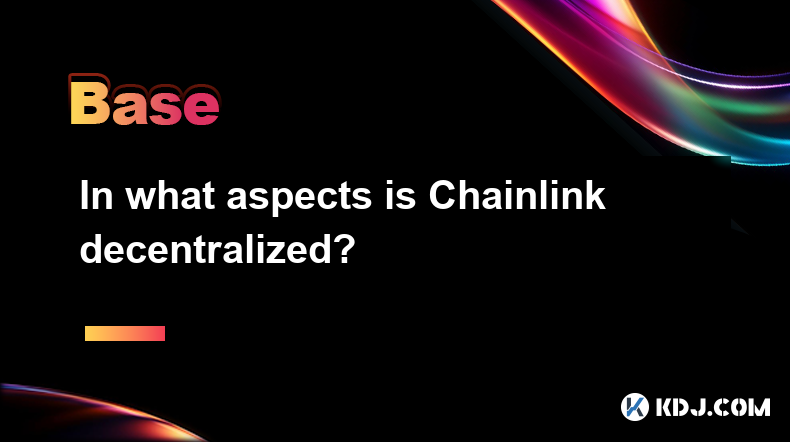
In what aspects is Chainlink decentralized?
Apr 02,2025 at 05:49pm
Chainlink is a decentralized oracle network that plays a crucial role in connecting smart contracts on blockchain networks with real-world data. Its decentralization is reflected in multiple aspects, ensuring the network's security, reliability, and integrity. This article delves into the various ways Chainlink achieves decentralization, including its n...

How does Chainlink connect smart contracts with real-world data?
Apr 02,2025 at 03:56pm
Chainlink is a decentralized oracle network that plays a crucial role in connecting smart contracts on blockchain platforms with real-world data. Smart contracts are self-executing contracts with the terms of the agreement directly written into code, but they can only interact with on-chain data. To access real-world data, such as stock prices, weather ...
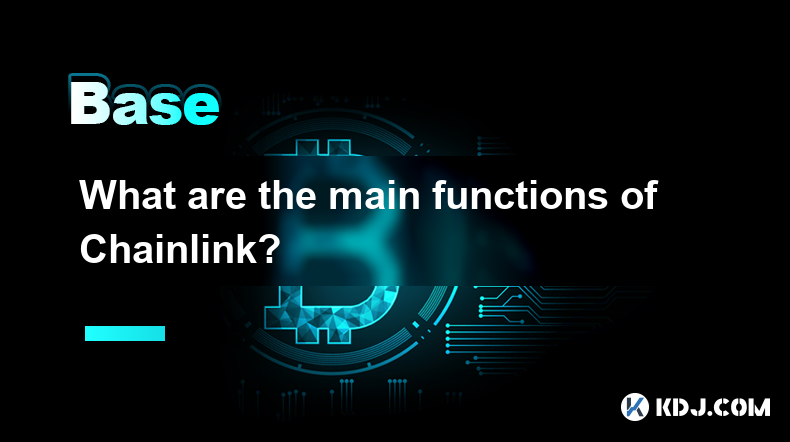
What are the main functions of Chainlink?
Apr 02,2025 at 11:49pm
Chainlink is a decentralized oracle network that plays a crucial role in connecting smart contracts with real-world data and external APIs. The primary function of Chainlink is to facilitate the seamless integration of off-chain data into on-chain smart contracts, enabling them to execute based on real-world events and information. This integration is v...
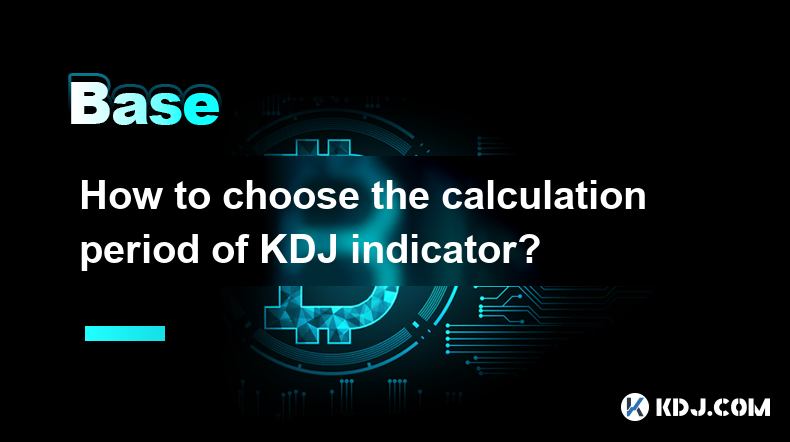
How to choose the calculation period of KDJ indicator?
Apr 02,2025 at 01:00pm
The KDJ indicator, also known as the Stochastic Oscillator, is a popular technical analysis tool used by cryptocurrency traders to identify potential buy and sell signals. The calculation period of the KDJ indicator is crucial in determining its effectiveness in predicting market trends. In this article, we will explore the factors to consider when choo...

What does it mean when KDJ indicator deviates?
Apr 01,2025 at 03:08pm
The KDJ indicator, also known as the Stochastic Oscillator, is a popular technical analysis tool used in the cryptocurrency market to predict price movements. When the KDJ indicator deviates, it means that the current price of a cryptocurrency is moving away from its typical range, as indicated by the KDJ lines. This deviation can signal potential trend...
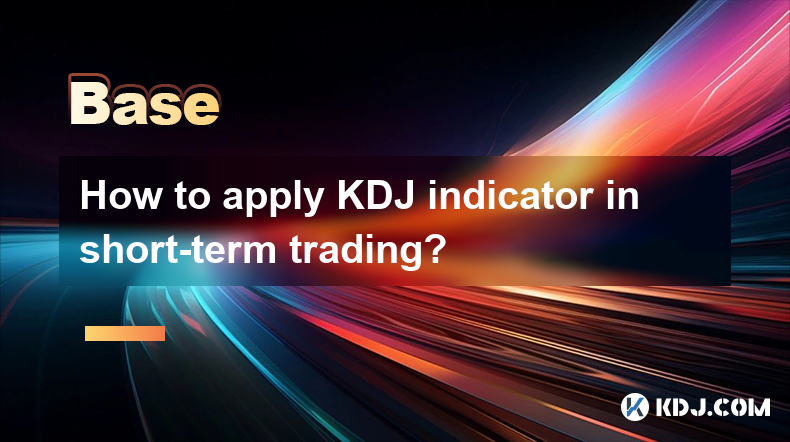
How to apply KDJ indicator in short-term trading?
Mar 31,2025 at 10:28pm
The KDJ indicator, also known as the Stochastic Oscillator, is a popular technical analysis tool used by traders to identify potential buy and sell signals in the cryptocurrency market. In short-term trading, the KDJ indicator can be particularly useful due to its sensitivity to price movements. This article will explore how to effectively apply the KDJ...

In what aspects is Chainlink decentralized?
Apr 02,2025 at 05:49pm
Chainlink is a decentralized oracle network that plays a crucial role in connecting smart contracts on blockchain networks with real-world data. Its decentralization is reflected in multiple aspects, ensuring the network's security, reliability, and integrity. This article delves into the various ways Chainlink achieves decentralization, including its n...

How does Chainlink connect smart contracts with real-world data?
Apr 02,2025 at 03:56pm
Chainlink is a decentralized oracle network that plays a crucial role in connecting smart contracts on blockchain platforms with real-world data. Smart contracts are self-executing contracts with the terms of the agreement directly written into code, but they can only interact with on-chain data. To access real-world data, such as stock prices, weather ...

What are the main functions of Chainlink?
Apr 02,2025 at 11:49pm
Chainlink is a decentralized oracle network that plays a crucial role in connecting smart contracts with real-world data and external APIs. The primary function of Chainlink is to facilitate the seamless integration of off-chain data into on-chain smart contracts, enabling them to execute based on real-world events and information. This integration is v...

How to choose the calculation period of KDJ indicator?
Apr 02,2025 at 01:00pm
The KDJ indicator, also known as the Stochastic Oscillator, is a popular technical analysis tool used by cryptocurrency traders to identify potential buy and sell signals. The calculation period of the KDJ indicator is crucial in determining its effectiveness in predicting market trends. In this article, we will explore the factors to consider when choo...

What does it mean when KDJ indicator deviates?
Apr 01,2025 at 03:08pm
The KDJ indicator, also known as the Stochastic Oscillator, is a popular technical analysis tool used in the cryptocurrency market to predict price movements. When the KDJ indicator deviates, it means that the current price of a cryptocurrency is moving away from its typical range, as indicated by the KDJ lines. This deviation can signal potential trend...

How to apply KDJ indicator in short-term trading?
Mar 31,2025 at 10:28pm
The KDJ indicator, also known as the Stochastic Oscillator, is a popular technical analysis tool used by traders to identify potential buy and sell signals in the cryptocurrency market. In short-term trading, the KDJ indicator can be particularly useful due to its sensitivity to price movements. This article will explore how to effectively apply the KDJ...
See all articles
























































































